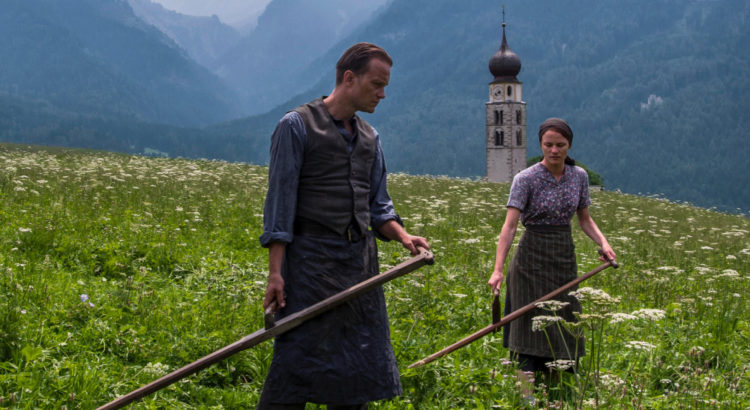A Hidden Life, at its core, is the story of a man that refuses to swear an oath of service to Hitler. Beyond this guiding plot point, though, this film displays and questions important themes found back then and now. Ideas like the effect of the individual, the meaning of citizenship, and the value of morality are abound in this movie, and I enjoyed the way they were explored: openly and with a steady pace.
A specific aspect of the film that I found interesting was the language choice. The setting changes between Austria and Germany, and both English and German are used throughout the film. Ultimately, to me, it looks like English was just used for contemplative voice overs and when necessary in the plot. This was really intriguing, as you would experience characters speaking both languages. I don’t speak German, so piecing together the German and English-speaking sides of each character added another layer to my closeness to and contextualization of these characters. Another aspect of this language choice was that (outside of plot-essential points), the Nazi figures in the film pretty much just spoke German. It’s definitely a different effect to hear prison guards screaming abuse in German rather than English– this had me thinking about how Americans conceptualize and stereotype the German language. Not to say the director was trying to do anything more than stay historically accurate, but there’s definitely a certain public cultural memory that’s accessed with the German language being used like that.
Terrence Malick’s form of storytelling may not be for everyone, but I find the contemplative and non-linear aspects of his work to be the most compelling. Shots move in thoughtful, visually challenging ways that aren’t afraid to linger and create highly meditative moments. The beautiful Austrian mountains and a gritty Berlin prison offer two central settings that aren’t hard to make visually intriguing. That may be true, but by the end of the film I found myself taken by the sense of place achieved by Malick. When the setting returns to the lush hills of Austria, one feels the heartache of home. When one re-enters the prison setting throughout the film, one feels the tension of the compound. The places created in A Hidden Life are transferred quite vividly to the viewers’ minds, and thus create an intense, seemingly intimate understanding of the aura and symbolic relevance of the place.
I encourage people to see this film, to take the time to let Malick’s world swallow you whole, and to experience the cerebral yet very grounded and real work he has created.


